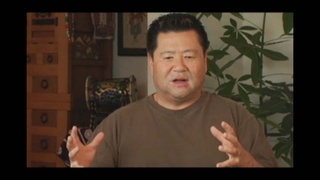Entrevistas
Experiences in Hiroshima after the A-bomb
Going through that, getting out the train station from Nishi, Hiroshima - it’s where we start to walking, in the heart of Hiroshima really, right by the street car track, we follow that into - past center of A-bomb and then to Hiroshima station and…there’s smoke you know coming up, not too much fire, there’s smoking coming…the people still lying in the street and also on the river, people floating and…we were…”how come, those dead people?...Why don’t they put them someplace?”
But you have to realize is, it’s only a day and a half after the bomb was dropped. And we still didn’t know that was an A-bomb, didn’t know…after we were back to our, my base company in Tadanoumi, that we were told that A-bomb is very special bomb. And then they immediately, the - lot of my friends in the army they got to Tadanoumi - went back to Hiroshima to attend all the wounded people and help on the clean up or…but, a lot of them just went over there to treat the people, now I don’t know.
I know there were a lack of medical help and everything. But all my friends did best they could, and they told me that you know, people over there asking for simple glass of water. And then they were told not to give any water to the people because that’s deadly. Well, you know, they says people grab you and they say, heitai-san – you know they says, hey soldier, please, please give me some water. And they ask you that, they have to turn around and then close their eyes and have to give them water, and they says sure enough, 3 or 4 hours later, they’ll die.
Yeah… so, you know I didn’t have that experience with me but knowing what the A-bomb did to the city, and afterwards we read about it and then…but looking at city – and all flat and then thousands and thousands people that died…yeah it’s too much hell and then we thought, hey this A-bomb should never been used again, I’m firm believer, I do believe, firmly believe that shouldn’t be used again, yes
Data: June 17, 2008
Localização Geográfica: California, US
Entrevistado: Janice Tanaka
País: Watase Media Arts Center, Japanese American National Museum





